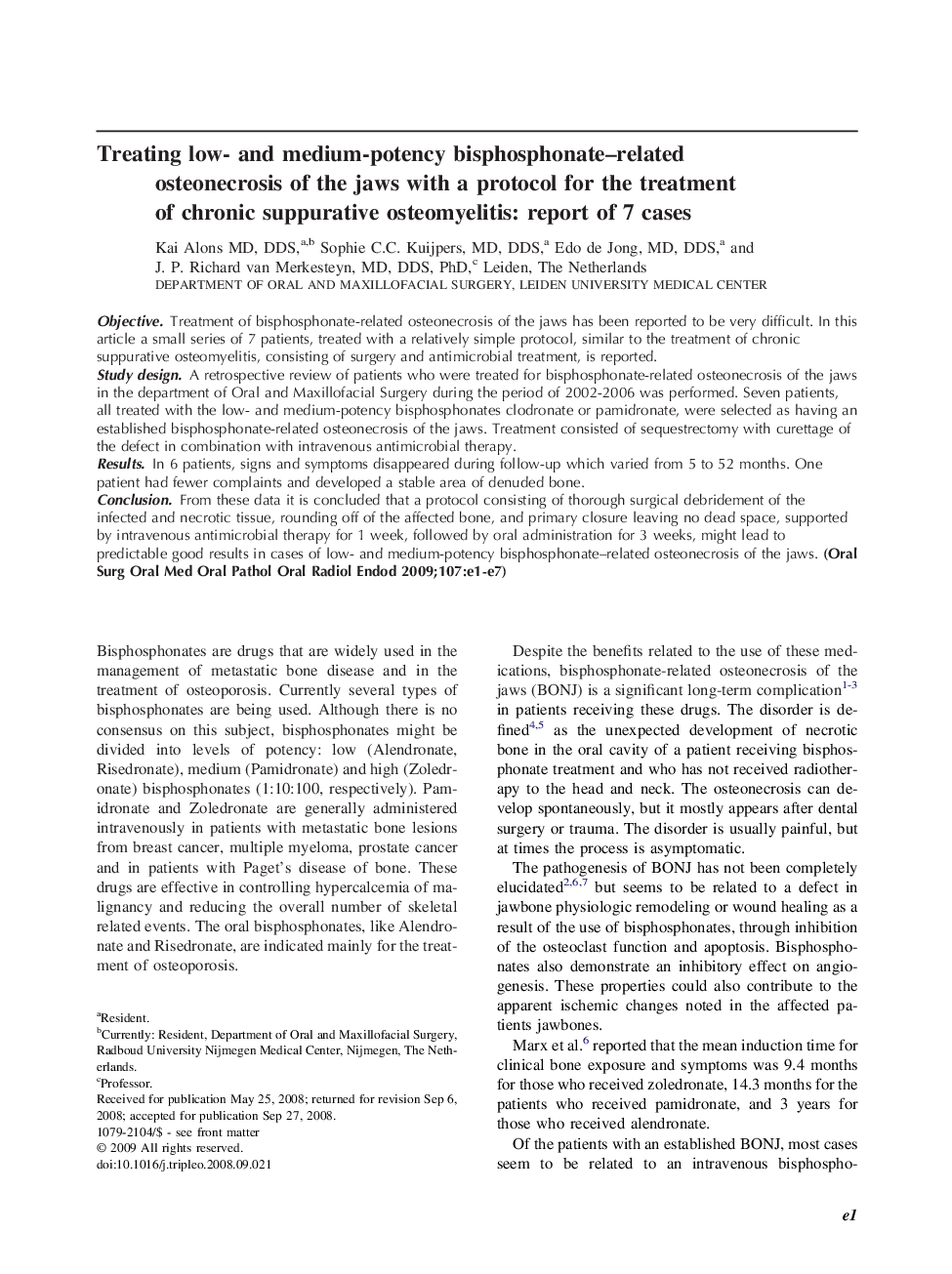| Article ID | Journal | Published Year | Pages | File Type |
|---|---|---|---|---|
| 3168323 | Oral Surgery, Oral Medicine, Oral Pathology, Oral Radiology, and Endodontology | 2009 | 7 Pages |
ObjectiveTreatment of bisphosphonate-related osteonecrosis of the jaws has been reported to be very difficult. In this article a small series of 7 patients, treated with a relatively simple protocol, similar to the treatment of chronic suppurative osteomyelitis, consisting of surgery and antimicrobial treatment, is reported.Study designA retrospective review of patients who were treated for bisphosphonate-related osteonecrosis of the jaws in the department of Oral and Maxillofacial Surgery during the period of 2002-2006 was performed. Seven patients, all treated with the low- and medium-potency bisphosphonates clodronate or pamidronate, were selected as having an established bisphosphonate-related osteonecrosis of the jaws. Treatment consisted of sequestrectomy with curettage of the defect in combination with intravenous antimicrobial therapy.ResultsIn 6 patients, signs and symptoms disappeared during follow-up which varied from 5 to 52 months. One patient had fewer complaints and developed a stable area of denuded bone.ConclusionFrom these data it is concluded that a protocol consisting of thorough surgical debridement of the infected and necrotic tissue, rounding off of the affected bone, and primary closure leaving no dead space, supported by intravenous antimicrobial therapy for 1 week, followed by oral administration for 3 weeks, might lead to predictable good results in cases of low- and medium-potency bisphosphonate–related osteonecrosis of the jaws.
